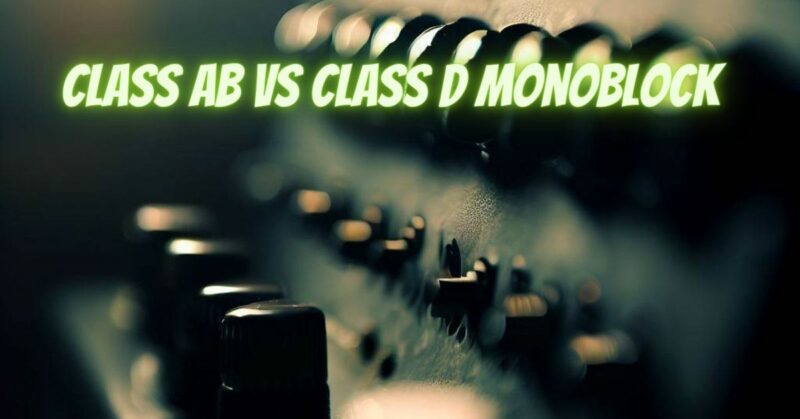When it comes to amplifiers, particularly monoblock amplifiers, you’ll often encounter different amplifier classes, with Class AB and Class D being two of the most prevalent. These amplifier classes have distinct characteristics and performance attributes that cater to different audio needs. In this article, we’ll delve into the world of monoblock amplifiers and explore the key distinctions between Class AB and Class D amplifiers.
Understanding Amplifier Classes
Amplifiers are categorized into various classes based on their internal circuitry and how they handle and amplify audio signals. Two common classes, Class AB and Class D, offer unique advantages and trade-offs.
Class AB Amplifiers:
- Operation: Class AB amplifiers combine the characteristics of Class A (where transistors conduct continuously) and Class B (where transistors conduct only half the time) amplifiers. This results in a more balanced approach to amplification.
- Efficiency: Class AB amplifiers are relatively efficient, but they generate more heat compared to Class D amplifiers due to their constant operation. This heat can be dissipated using heat sinks.
- Sound Quality: They are known for their excellent sound quality, with low distortion and high linearity. Class AB amplifiers reproduce audio signals faithfully and accurately.
- Applications: Class AB amplifiers are widely used in high-fidelity home audio systems, car audio setups, and professional audio equipment.
Class D Amplifiers:
- Operation: Class D amplifiers, also known as digital amplifiers or switching amplifiers, use pulse-width modulation (PWM) or other switching techniques to amplify audio signals. They rapidly switch the transistors on and off.
- Efficiency: Class D amplifiers are highly efficient, as they minimize power loss in the amplification process. This efficiency results in less heat generation and smaller form factors.
- Sound Quality: While Class D amplifiers have made significant advancements in sound quality over the years, they may not always match the audiophile-grade sound quality of Class AB amplifiers. However, modern Class D amplifiers can provide excellent sound quality for most applications.
- Applications: Class D amplifiers are commonly used in compact audio devices, mobile and portable amplifiers, and subwoofer amplification due to their efficiency and compact size.
Key Distinctions:
- Efficiency: Class D amplifiers are significantly more efficient than Class AB amplifiers, making them ideal for applications where power efficiency and compact size are crucial.
- Heat Generation: Class AB amplifiers generate more heat due to their constant operation, whereas Class D amplifiers run cooler thanks to their switching technology.
- Size: Class D amplifiers are generally smaller and more compact, making them suitable for space-constrained applications.
- Sound Quality: Class AB amplifiers are often preferred for high-fidelity and critical listening setups, while Class D amplifiers offer a balance between size and sound quality, making them suitable for a wide range of applications.
- Price: Class D amplifiers are often more affordable due to their compact design and efficiency, while Class AB amplifiers tend to be more expensive, especially in high-end audio systems.
The choice between Class AB and Class D monoblock amplifiers ultimately depends on your audio requirements and priorities. If you prioritize sound quality and are willing to accommodate larger sizes and potentially more heat generation, Class AB amplifiers may be the better choice. On the other hand, if you require efficiency, compactness, and good sound quality for various applications, Class D amplifiers offer a practical and cost-effective solution. Both amplifier classes have their merits and excel in different scenarios, so consider your specific needs when making your decision.


